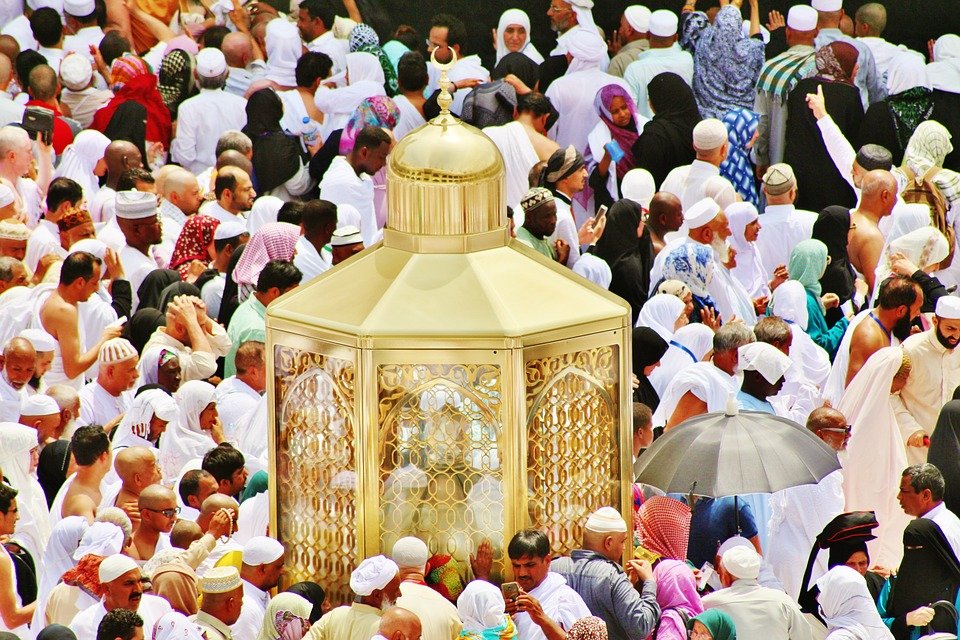You are here to read: Did Umar Reject Hajj Tamattu? Explore the Historical Debate! – A Thoughtfully Written Guide Offering Spiritual Wisdom and Travel Advice for Every Pilgrim who is going on holy journey of Hajj or Umrah.
In the discussion of whether “Did Umar Reject Hajj Tamattu,” I find it essential to clarify the different opinions surrounding this topic. Umar ibn al-Khattab, the second Caliph of Islam, held distinct views on Hajj Tamattu, and this has sparked significant historical debate. In this article, I promise to provide you with a comprehensive guide on the matter, detailing various perspectives and interpretations. As we explore this important issue, you will gain insights into why many Muslims regard Hajj Tamattu as a legitimate form of pilgrimage, despite Umar’s reservations.
Understanding the significance of whether “Did Umar Reject Hajj Tamattu” can deepen our comprehension of Islamic practices and traditions. In my opinion, examining Umar’s stance helps us appreciate the rich tapestry of Islamic jurisprudence and the varying interpretations of sacred rites. With nine years of experience in the Umrah and Makkah, Madinah travel field since 2016, I assure you that our insights are well-informed and valuable. As we explore this historical debate, we aim to offer clarity and guidance, fostering a deeper connection to the practices that enrich our spiritual lives.
Did Umar Reject Hajj Tamattu? Explore the Historical Debate!
Understanding Hajj Tamattu
Hajj Tamattu is a fascinating topic in Islamic tradition. It refers to a specific way of performing Hajj, where pilgrims can combine Umrah and Hajj in one trip during the same year. It’s a practice that many find appealing due to its flexibility. During Hajj Tamattu, pilgrims perform Umrah first, then enter into the rituals of Hajj at a later date. This dual observance makes it easier for many to experience both rites, especially those traveling from afar.
Many Muslims wonder why this particular method became a topic of debate. Among the notable figures in Islamic history, Caliph Umar ibn al-Khattab stands out, especially when discussing Hajj Tamattu. He is known for his strong opinions on various religious practices. The nuances of his perspective create a rich historical discussion that continues to intrigue scholars and laypeople alike.
The Views of Umar ibn al-Khattab
Umar ibn al-Khattab had a unique approach to Islamic practices. While he accepted the essentials of Hajj and Umrah, his views on Hajj Tamattu were more reserved. He expressed doubt about the permissibility of performing the two together. Umar believed that pilgrims should maintain a clear distinction between the two spiritual journeys. He thought this separation reflected a deeper understanding of each ritual’s significance.
His stance raises questions about intent and adherence to religious guidelines. While some felt that combining Umrah and Hajj offered more convenience, Umar recommended focusing deeply on each act. In his view, understanding the separate meanings of every ritual could help believers engage more profoundly with their faith. This debate reflects larger conversations about how to navigate faith in daily life and maintain a balance between tradition and practicality.
Historical Context and Debates
Historically, Umar’s time was marked by multiple discussions on the proper ways to perform rituals. Early Islamic society was evolving, and with this growth came different interpretations of practices. Scholars, companions of the Prophet Muhammad, and everyday believers engaged in spirited debates on how best to follow religious teachings.
You're at the middle of this awesome post at AirlinkHajjandUmrah.com through: Did Umar Reject Hajj Tamattu? Explore the Historical Debate!. Keep reading, it gets better!
This era was rich with diverse perspectives. While many supported Umar’s concerns about Hajj Tamattu, others defended its practice as a legitimate way to worship. The debate wasn’t just about one method; it was a broader reflection of how early Muslims grappled with developing traditions and ensuring that everyone could fulfill their religious duties effectively.
Arguments For and Against Hajj Tamattu
Supporters of Hajj Tamattu argue that this practice provides immense benefits for pilgrims. First, it allows for greater accessibility, especially for those coming from distant lands. By minimizing the financial and physical burden of making two separate trips, more people can fulfill their spiritual needs. This perspective emphasizes inclusivity and engagement with faith.
On the flip side, critics, including Umar, maintain that performing Umrah and Hajj separately allows for a deeper connection with the spiritual essence of each rite. They feel this separation encourages pilgrims to engage more thoughtfully with their practices. By fully immersing themselves in each ritual, believers can foster a more meaningful relationship with their faith. This argument highlights the importance of understanding the historical and spiritual significance of each act, beyond mere convenience.
Scholarly Interpretations
Scholars weighing in on this topic have offered varied interpretations of Umar’s position. Some suggest Umar’s hesitance stemmed from his efforts to uphold the integrity of spiritual practices. His concerns were not simply about the mechanics of travel or convenience but rather about preserving the sanctity of rituals.
Conversely, other scholars argue that Umar’s views reflect a broader caution against altering traditional practices too dramatically. They believe that while alteration can sometimes enhance spiritual experiences, it also risks diluting the fundamental teachings. This ongoing dialogue in scholarship underscores the complexity and depth of Islamic practices, inviting many to reflect upon their own beliefs and practices.
Personal Reflections on the Debate
In my opinion, the discussion surrounding Umar and Hajj Tamattu serves as a powerful reminder of the complexities inherent in faith. I feel it invites us to examine our own beliefs. While some may prefer the convenience of Hajj Tamattu, others may find richness in maintaining distinct rituals. Each approach carries its own merits.
Through this lens, we can appreciate the significance of debate in religious thought. Engaging with varying interpretations enriches our understanding of spirituality. It reminds us that faith can be both personal and communal, urging us to explore the depths of our beliefs while also embracing diverse perspectives within our communities.
Conclusion: A Continuing Conversation
The discourse around Umar’s rejection of Hajj Tamattu is far from settled. Both supporters and detractors present compelling arguments that continue to resonate today. This historical debate encourages a deeper exploration of spiritual practices and their implications for modern believers.
As we reflect on these discussions, we realize the importance of understanding the diverse voices within our faith traditions. This conversation not only enhances our knowledge but also fosters unity amidst diversity, reminding us that our spiritual journeys, no matter how varied, aim for a common goal: a deeper connection to our faith.
That wraps up Did Umar Reject Hajj Tamattu? Explore the Historical Debate!. Thanks for sticking with us till here! Share this: Did Umar Reject Hajj Tamattu? Explore the Historical Debate! with your friends.
Check our homepage at Air Link Hajj & Umrah for more awesome updates.
Some interesting posts are: 1: Umrah Mubarak, 2: When is Umrah closed 2026?, 3: When does Umrah start after Hajj 2026?
Mushu, an experienced Saudi Arabia traveler and writer, shares insightful tips and spiritual reflections to enhance Hajj and Umrah journeys for fellow pilgrims. He has been to Makkah and Madina from 2016 to 2023 many times and his posts will reflect this.






